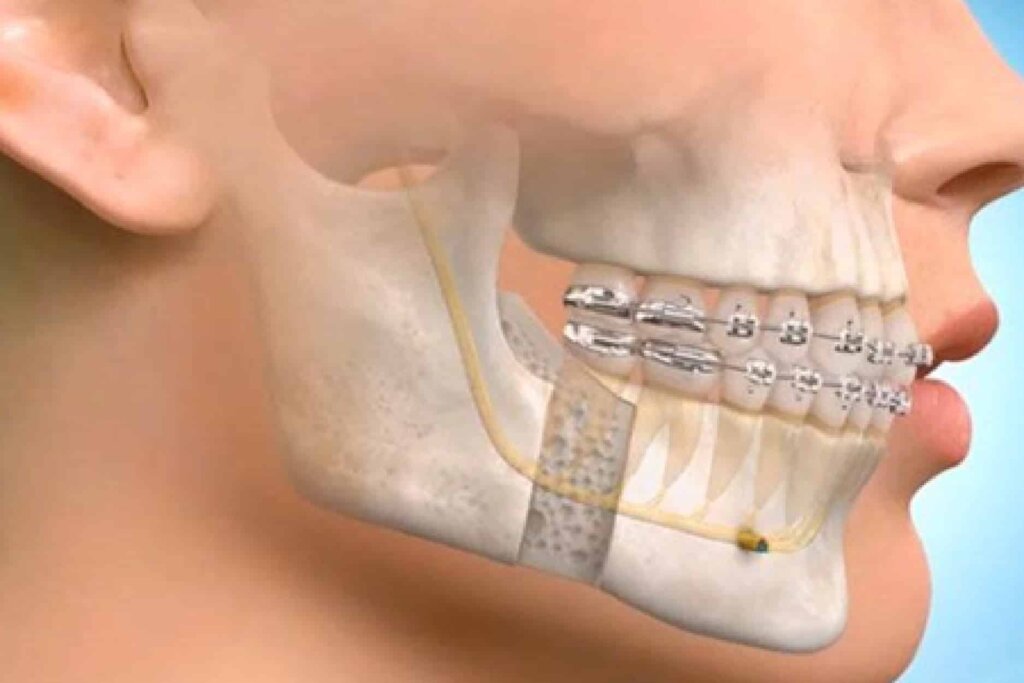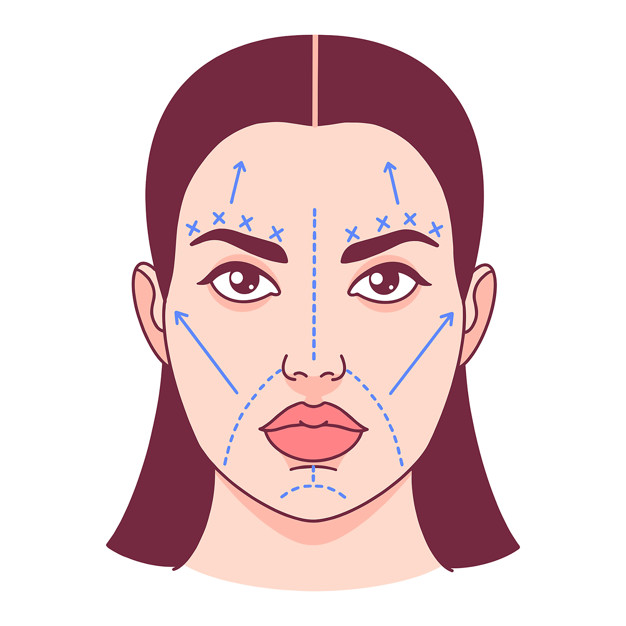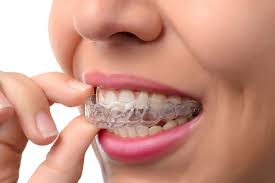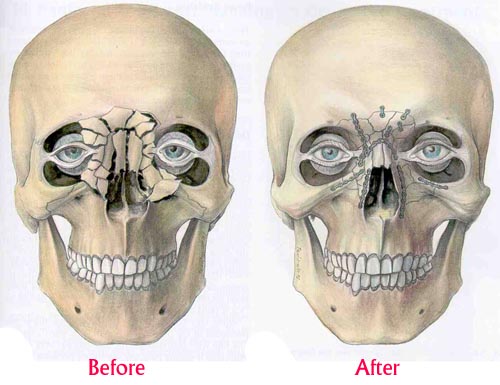Facilities
Maxillofacial Surgery
You can think of the oral and maxillofacial region of your body as the mouth and all its connecting regions. You obviously chew with your jawbone and your teeth. This area is part of the network with your face, head, and neck. When you have oral and maxillofacial surgery, someone operates on your face. The only question is exactly where this happens.
Now that you know where it happens, you can guess the causes for this kind of surgery. The most frequent reason is that you need to replace some teeth. Generally, this happens due to trauma or illness. A punch in the mouth or car wreck might displace your teeth. The surgery would fix or replace the impacted area.


Dental Implants


There are many advantages to dental implants, including:
* Improved appearance: Dental implants look and feel like your own teeth. And because they are designed to fuse with bone, they become permanent.
* Improved speech: With poor-fitting dentures, the teeth can slip within the mouth causing you to mumble or slur your words. Dental implants allow you to speak without the worry that teeth might slip.
* Improved comfort: Because they become part of you, implants eliminate the discomfort of removable dentures.
* Easier eating: Sliding dentures can make chewing difficult. Dental implants function like your own teeth, allowing you to eat your favourite foods with confidence and without pain.
* Improved self-esteem: Dental implants can give you back your smile and help you feel better about yourself.
* Improved oral health: Dental implants don’t require reducing other teeth, as a tooth-supported bridge does. Because nearby teeth are not altered to support the implant, more of your own teeth are left intact, improving long-term oral health. Individual implants also allow easier access between teeth, improving oral hygiene.
* Durability: Implants are very durable and will last many years. With good care, many implants last a lifetime.
* Convenience: Removable dentures are just that; removable. Dental implants eliminate the embarrassing inconvenience of removing dentures, as well as the need for messy adhesives to keep them in place
Facial plastic surgery
Facial plastic surgery can be important because our facial expressions allow us to interact and communicate with each other. Our appearance has an impact on how others perceive us. While some would like to improve certain parts of their face, others are born with facial abnormalities such as a cleft lip, a birthmark, or other birth defects. Fortunately, many conditions such as the effects of aging, sun damage, or previous facial trauma can be corrected through procedures performed by a skilled surgeon.
Cosmetic facial plastic surgery is surgery meant to enhance visual appearance of the facial structures and features. Common procedures include facelifts, eye lifts, rhinoplasty, chin and cheek implants, liposuction, and procedures to correct facial wrinkles. Maxillofacial surgeons are well trained to address all these problems.


Surgical facial plastic treatments include:
* Blepharoplasty: Surgery of the upper and/or lower eyelids to improve the function (like drooping eyelids) and/or appearance of the eyes
* Browlift: Surgery to improve forehead wrinkles and droopy eyebrows
* Rhytidectomy: Surgery of the skin on the face and neck to tighten the skin and remove excess wrinkles
* Liposuction: Surgery to remove excess fat under the chin or in the neck
* Facial Implants: Surgery to make certain structures of the face (cheek, lips, chin) more prominent and well defined
* Otoplasty: Surgery to reshape the cartilage of the ears so they protrude less
* Skin Surface Procedures: Surgery using lasers, chemical peels, or derma-abrasion to improve the smoothness of the skin
* Facial Reconstruction: Surgery to reconstruct defects in facial skin from prior surgery, injury, or disease, including reconstruction resulting from cancer surgery, scar revision, repair of prior facial trauma, removal of birth marks, and correction of congenital abnormalities of the skull, palate, or lips.
Orthodontic Dentistry
Dental braces are appliances which are used to align or straighten the teeth and guide the teeth to the corrected position. They are made up of wires, brackets, and bands. Braces aid to correct irregular teeth positioning, jaw correction, improvement in chewing and smile aesthetics.
The major reason for getting Braces on is to improve the facial appearance, what people do not know is that there are any other implications which require orthodontic treatment like open bite, jaw structure, crossbite etc.
Every individual is different. Orthodontic treatment can be started as young as 7 years old. There is no upper limit in terms of age for Braces.


If you have good oral health and firm teeth, you can get braces at any age.
Metal Conventional Braces: These are the traditional and most common type of braces. The metal braces used today are much more comfortable and smaller in size. These require elastics which come in a variety of colors to tie the wire to the braces. The wires use your body heat to move teeth more quickly and less painfully. There is no age limit attached to these, as patients of all ages can choose to straighten their teeth using metal braces.
Metal Self Ligating Braces: These are metal Brackets with a shutter or lock system and do not require the use of elastic to tie the wire. In comparison to traditional metal braces, metal self-ligating braces are more comfortable and smaller in size. These are helpful in achieving arch expansion and minimize the need for extraction.
Ceramic Conventional Braces: Ceramic braces are the ones with clear brackets. They use tooth color and blends more naturally with your teeth. The shape and size are the same as metal braces. These are less visible on the teeth and as a result, are preferred by older teenagers and adults who might have aesthetic concerns. Sometimes, even the wires used are of tooth color which makes them less noticeable. Being less prominent, they require more care and protection compared to metal braces as they are larger and more brittle. They require extra protection, hence, are used more in upper teeth than lower.
Lingual Braces: Lingual Braces are heavy metal braces which are placed behind the teeth. These metallic braces can be made even of silver or gold. The individual Bracket is customized using CAD-CAM / 3D Designing. The treatment is highly aesthetic and less visible. This, however, can cause mild speech difficulties during the course of the treatment.
Aligners: Clear Aligners are medical grade plastic trays that do not require any braces or wire. They are totally invisible hence; the aesthetic concerns are duly met and make them very appealing with adults who need orthodontic treatment. Though placed inside they do not have any food restrictions associated. People believe that being placed on the inside, they might face speech difficulties; which is a myth. On the other hand, transparent braces are highly comfortable and hygienic. Clear Aligners also hide existing gaps.
Cosmetic Dentistry


Types of Cosmetic Dentistry
Teeth Whitening:
Teeth whitening can be one of the simplest and least expensive ways to improve your smile. Teeth can be bleached with in-office products in your dentist’s office for about $500, or you can buy a mold and gels from your dentist to bleach your teeth at home. There are also whitening products available over the counter at retail stores for convenient at-home whitening: whitening toothpastes, rinses, and whitestrips.
Dental Veneers: Dental veneers are wafer-thin, custom-made shells of tooth-colored porcelain or resin that cover the front surface of the teeth. After removing about a half-millimeter of enamel from the tooth surface, these thin shells are bonded (cemented) to the front of the teeth, changing their color, shape, size, or length. Veneers are often called “Hollywood teeth.”
Dental Bonding : In dental bonding, a tooth-colored, putty-like resin, which is a durable plastic material, is applied to the tooth and hardened with an ultraviolet or laser light, bonding the material to the tooth. Your dentist then trims, shapes, and polishes it. Bonding can repair decayed, chipped, cracked, or misshapen teeth; it is also a good cosmetic alternative to, or replacement for, amalgam or silver fillings.
Dental Crown : A dental crown, also called a cap, fits over and replaces the entire decayed or damaged tooth above the gum line, restoring its shape, size, strength, and appearance. Crowns keep a weak tooth from breaking or hold a cracked tooth together; they can be used cosmetically to cover misshapen or severely discolored teeth.
Inlays and Onlays: Inlays and onlays, also called indirect fillings, are made from gold, porcelain, or composite materials and fill decayed or damaged teeth. Dental fillings are molded into place during an office visit; however, inlays and onlays are created in a dental laboratory and bonded into place by your dentist. The filling is called an “inlay” when the material is bonded within the center of a tooth; it is called an “onlay” when the filling includes one or more points of the tooth or covers the biting surface. Inlays and onlays preserve as much healthy tooth as possible and are an alternative to crowns.
Dental Implants : Dental implants are titanium replacement tooth roots inserted into the bone socket of the missing tooth. As the jawbone heals, it grows around the implanted metal post, anchoring it securely in the jaw and providing a foundation for a replacement tooth.
Other Options : A bridge is made of crowns for the teeth on either side of a gap with false teeth in between. A denture is a removable replacement for missing teeth. Dental braces can straighten crooked or misaligned teeth and works by applying continuous pressure over a period of time.
Laser


Still, some dentists are using lasers to treat:
* Tooth decay: Lasers are used to remove decay within a tooth and prepare the surrounding enamel for receipt of the filling.
* Gum disease: Lasers are used to reshape gums and remove bacteria during root canal procedures.
* Biopsy or lesion removal: Lasers can be used to remove a small piece of tissue (called a biopsy) so that it can be examined for cancer. Lasers are also used to remove lesions in the mouth and relieve the pain of canker sores.
* Teeth whitening: Lasers are used to speed up in-office teeth whitening procedures. A peroxide bleaching solution, applied to the tooth surface, is ”activated” by laser energy, which speeds up of the whitening process.
All lasers work by delivering energy in the form of light. When used for surgical and dental procedures, the laser acts as a cutting instrument or a vaporizer of tissue that it comes in contact with. When used in teeth-whitening procedures, the laser acts as a heat source and enhances the effect of tooth-bleaching agents.
Facial bones Fractures

